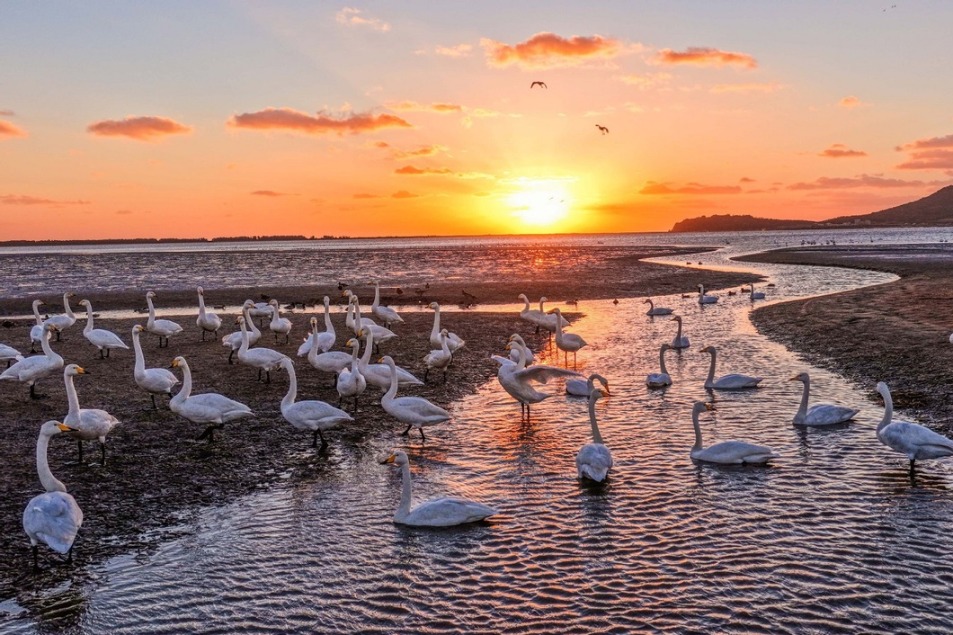Coastal bird sanctuaries a World Heritage candidate


China will apply to make the second phase of its migratory bird sanctuaries, which lie along the coast of the Yellow Sea and Bohai Gulf, a UNESCO World Heritage site before February, aiming to further protect wildlife in the world's largest intertidal wetland system.
The migratory bird sanctuaries along the Yellow Sea-Bohai Gulf coast are in exceptionally productive areas that also serve as areas where many species of fish and crustaceans grow.
The areas are of global importance as gathering places for many migratory bird species that use the East Asian-Australasian Flyway. Large gatherings of birds, including some of the world's most endangered species, depend on the coastline as a stopover to molt, rest, winter or nest.
Phase I of the area was inscribed into the World Heritage List by the World Heritage Committee in July 2019 at its 43rd session.
Phase II covers several habitats of many migratory bird species in Tianjin and Shanghai and the provinces of Liaoning, Hebei and Shandong, said Yan Chenggao, deputy director of the National Forestry and Grassland Administration's nature reserves department.
"Most of those regions are highly developed, which has been regarded as a downside for a world heritage site listing," he said. "We will work closely with the local governments and make reform plans with professional guidance. We are confident in finishing the declaration on time."
The Phase II area is high in biodiversity, with about 280 species of fish and more than 500 species of invertebrates providing a variety of food sources for millions of migratory birds.
The 186,400 hectares of Phase I, located in Yancheng, Jiangsu province, are important for more than 3 million birds among the East Asian-Australasian Flyway populations and provide critical habitat for 17 endangered wild species on the International Union for Conservation of Nature's red list, including two of the world's rarest migratory birds-the spoon-billed sandpiper and the Nordmann's greenshank, which depend on the tidal flats for their continued survival.
"Having the sanctuaries listed as a World Heritage site helped to increase public awareness of the migratory birds and also contributed to biosecurity and biodiversity worldwide," Yan said.
Since joining the International Convention Concerning the Protection of the World Cultural and Natural Heritage in 1985, China has been granted 55 world heritage sites. Of these, 14 are natural heritage sites and four are mixed cultural and natural sites-both ranking first in the world.
The 44th session of the World Heritage Committee will be held in Fuzhou, Fujian province, from Friday to the end of the month.
- Xi attends carrier's commissioning
- Senior Xi'an official facing probe by China's anti-corruption watchdogs
- Philippines risks creating trouble for itself: China's defense ministry
- Newborn with congenital heart disease receives life-saving surgery in Yunnan
- Hong Kong charity signs diplomatic talent deal with Beijing university
- Aircraft carrier Fujian, commissioned



































